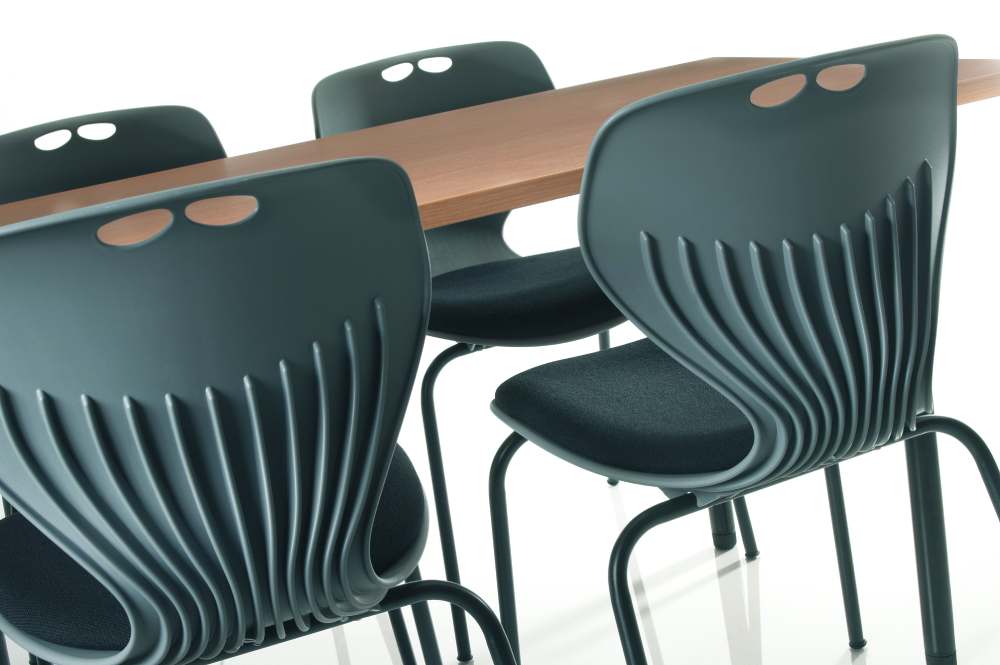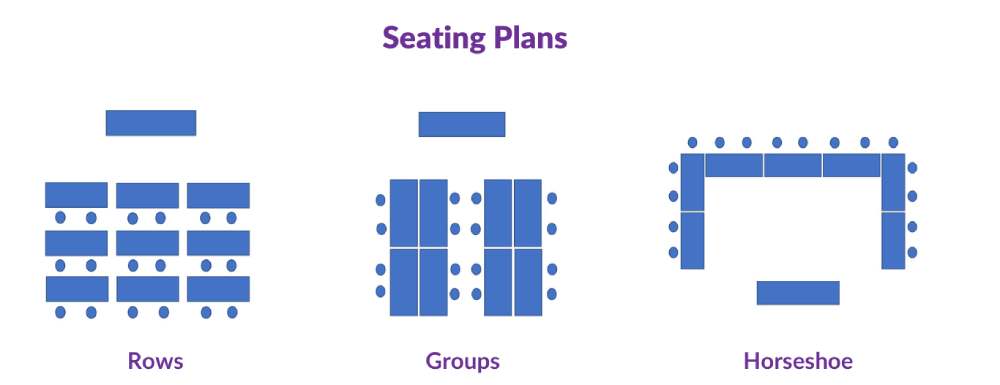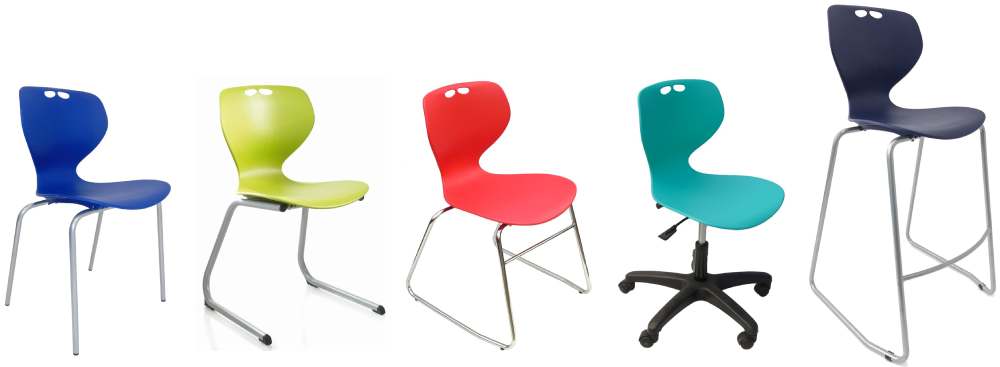How Seating Style and Seating Plans Impact Student Behaviour and Performance

How a student performs academically at school is determined by a number of key factors, such as natural ability, motivation, quality teaching, learning skills and access to resources. An often-overlooked contributory factor is also the learning environment and style of the furniture. This can have a significant impact on how students learn, develop, and progress.
Part of teaching style and pedagogy is effective classroom management. Creating a space conducive for teaching and learning is essential, and implementing a class seating plan plays a big role in this. Considering where students are seated and how the seating arrangement is configured will have a positive impact on student concentration, behaviour, engagement, and their overall performance.
Studies evidence that students who are assigned a seat by their teacher perform better than those who are allowed to choose where they sit.
Implementing a Seating Plan
Teachers give a great deal of thought to a seating plan, it is not an easy task to consider how to integrate a broad mix of students from different backgrounds, with varying abilities, to create balance and harmony in the classroom. Managing the class dynamic is one of the biggest stress triggers for teachers, and can lead to burnout, so classroom management is an important task to get right, not just for teachers, but for the benefit of all students, to ensure they have an environment where they can thrive.
Using seating plans supports teachers in classroom management and puts a strategy behind supporting student learning. A good seating arrangement will factor in the layout of the classroom, and pairings/groupings of individual students based on their personality and ability, to create the optimum learning environment.
The benefits of a carefully considered seating plan are:
- Better classroom management
- Improved student concentration and behaviour
- The individual needs of each student are considered
- Supports pedagogy
- Improved peer relationships – bringing the best out in each other and working collaboratively
Improved Classroom Management
There are a multitude of techniques and strategies that are applied to ensure effective classroom management. It is more complex than just creating a seating plan. But a good seating plan will help reinforce core classroom management techniques by setting the ground rules, allowing teachers to be in control of the class dynamic, encouraging positive learning behaviours, fostering collaboration between students, and ensuring students are focused and engaged in lesson content, making them more likely to learn and participate.
By creating an inclusive and productive learning environment through informed decisions about where students sit, teachers can take action to prevent problems before they even occur - for example, sitting students with visual or hearing impairments at the front of the class to facilitate them seeing the board better or hearing the teacher with improved clarity, or separating two talkative friends to ensure they listen and do not cause disruption.
The Psychology Behind the Seating Plan
In addition to assessing which individuals, pairs or groups of students will work best together, selecting the right layout for the classroom and configuration of the furniture also has an impact on student behaviour.
Research shows that the three most popular classroom configurations for desks and seating are rows, cluster groups, and semi-circles.
Rows: students face the front to maintain eye contact with the teacher/board. This is good for maintaining order, a calm and quiet environment, and for independent work. This is a great configuration for focused tasks and has demonstrated strong results for students with Special Educational Needs (SEN).
Groups: students face each other which promotes collaboration and discussion. This is good for group work, brainstorming, and inspiring students to ask questions. This is a great configuration for lively and interactive tasks and has demonstrated strong results in peer-led discussions which result in pupils learning a topic quicker.
Semi-circles/Horseshoes: students are situated in a U-shape configuration enabling them to face each other but also to maintain sight of the teacher. This is good for encouraging discussion and collaboration between students, but quickly restoring order when attention is required. It allows for a hybrid approach, taking the benefits from both the rows and groups set-up.
The optimum classroom layout will depend entirely on the teacher’s learning objective, the nature of the activity, and the preferred behaviour. Research suggests that allowing students to decide where they sit leads to three times the level of disruption compared to when a teacher implements a seating plan.
In the 1920s, German psychologist Otto Köhler, carried out research that demonstrates when a weaker member of the team carries out a task with a stronger member of the team, their overall performance is better than if they had carried out the same task alone. This study became known as the Köhler Effect and shows that contrary to opinions that a weaker individual could pull down the performance of the team, it actually demonstrates that stronger team members inspire and motivate the weaker individuals resulting in a much better overall team performance. This theory can be applied to the psychology behind seating plans, so students are configured to ensure that together everyone achieves more.
Seating plans will need to be adjusted throughout the year as students’ relationships, attitudes and personal lives change, impacting the way they behave and interact with each other.

Seating Style
We have considered how different desk configurations can impact how students behave and interact within the classroom, but the style of the seat also plays a key role. The seating inside an educational environment provides comfort and support for students as they immerse themselves in learning.
Early years and primary environments tend to encourage more movement, however by the time a student reaches secondary education they are estimated to spend approximately 78% of their time sitting down – so seating is an important consideration. The right size and style of chair will promote healthy student posture. Feeling comfortable ensures students are relaxed and able to focus without distractions.
Size Guidelines: chair height is measured from the floor to the top of the seat and each key stage has a suggested chair size which is based on the average height and weight of a child of that age group. BS EN 1729 (Part 1) is a European Standard that determines the functional dimensions (measurements and size markings) which acts as a compliancy guideline:
- Nursery (age 2-3yrs): SH210mm, size mark 0
- Pre-school (age 3-4yrs): SH260mm, size mark 1
- Reception (age 4-5yrs): SH310mm, size mark 2
- KS1 (age 6-7yrs): SH350mm, size mark 3
- KS2 (age 8-10yrs): SH380mm, size mark 4
- KS3 (age 11-13yrs): SH430mm, size mark 5
- KS4 (age 14yrs+): SH460mm, size mark 6
For areas with mixed age ranges, such as ICT suites, libraries, or science labs, height adjustable chairs or stools are a good option so students can adjust their seat to a comfortable height.
Material: educational seating is typically manufactured from wood, plastic, or foam and upholstery - for soft seating. When selecting wooden chairs, ensure they are from an ethical and sustainable source, carrying an FSC® certification. Plastic chairs tend to be soft plastics such as polypropylene or polyethylene, offering more flex and bend than hard plastics, enabling students to lean back and sit comfortably for extended periods of time. Look for an ergonomically designed shell where the shape and style will offer additional comfort. Upholstered seat pads are a good choice to improve comfort, and vinyl will help to keep the seat clean. Soft seating such as stools, sofas or lounge chairs offer students a choice and a cosy, more relaxed seat for socialising or working on informal tasks.
Colour: when selecting a colour for your seating this will be determined by personal preference or the school’s colour scheme. Colour can have an impact on emotions, well-being, and behaviour. Read our blog ‘Designing Spaces: How Does Colour Influence Well-being?’ for more information.
Frames: depending on individual preferences, the level of comfort, safety and support offered by school seating can be determined by the frame style selected. Options include:
Four leg frames: popular classroom choice as offers stability on tiled or wooden floors.
Sled /skid base: these frames are anti-tilt and will slide easily on carpets.
Castor base: usually found on swivel task chairs, but some multi-purpose or soft unit seats offer this option. Great for use in ICT suites so students can find a comfortable position when using computer equipment, or in collaborative areas where mobile seating supports flexible and adaptable layouts.
Stools: usually used alongside higher level desks in specialist areas such as Science Labs, Design Technology rooms or Art studios. In these areas it is not important to have a back rest as students are carrying out practical tasks whilst standing up, however if stools are being used in a breakout or dining space, a supportive back rest will offer support and comfort.
Additional Features: consideration should be given to practical and functional features of seating, depending on its purpose and location within the school. Most schools will carry out a deep clean during holiday periods, and so ensuring classroom or dining chairs have a stacking frame will facilitate the process of clearing the area quickly to allow cleaning staff access to the floors. Chair transport dollies are also a safe way of stacking, moving, or storing chairs. Chairs with linking clips are ideal for setting up configurations of seating for school performances where you want to ensure a tidy and fixed position. Writing tablets can make useful add-on accessories for exam or lecture hall seating where space for desking is limited.
Selecting chairs compliant with BS EN 1729 (Part 2) – strength and safety – can act as a guide to choosing suitable classroom seating.

Why Seating and Seating Plans Matter
We have explored how a carefully considered seating plan can have a positive impact on classroom management and student behaviour and performance. Selecting appropriate and comfortable styles of seating can further aid student concentration and support the creation of a learning environment that helps pupils to succeed.
Rhubarb Seating are specialists in the manufacture of a broad range of seating suitable for educational environments.
If you need support choosing the right seat for any area within a school, or advice selecting appropriate fabrics or styles, please get in touch.
